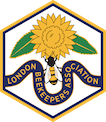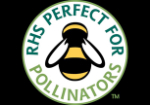
|
London Beekeepers' Association |

|
London Beekeepers' Association |
See our month-by-month guide to flowers that are good for bees. Frequently asked questionsInformation sheets:
What is forage?Forage refers to the plants and flowers from which bees and other pollinating insects collect their food. Pollen is a source of protein, particularly important for bees when raising young. Nectar is a sugary solution that give insects the energy they need to fly and keep warm. Honey bees turn some of this nectar into honey which they need for the winter months to stay warm in the winter months when they can't go out to forage. Some beekeepers take some of this honey to eat and sell, ensuring the bees have enough food to see them through the winter. Should we plant native plants for bees?For many years, ecologists have recommended the use of native flowers to attract insects. However, recent field trials have demonstrated that mixtures of native and non-native flowers can extend the flowering season and attract more pollinating insects and over a longer period of time. For this reason LBKA uses a special mix of 40 native and non native annuals in its forage creation projects around London. Most bees and other insect pollinators that visit urban gardens are not fussy about where they get their pollen and nectar from as long as it's readily accessible, has the correct sugar content and has pollen that is high in protein. Mixing native, non native and garden varieties helps extend the flowering season and provides a greater variety of pollen. The secret is to plant a wide variety of different type of flowers and to avoid highly bred varieties with double blooms. North American prairie species are particularly useful, as they can extend the flowering season right through to late summer and into autumn. However, native species are important for providing food for the larvae of insects such as butterflies and moths, so it's worth having these in the mix. 
What makes good forage?Hybrids with large colourful flowers often do not contain much nectar as they have been bred for appearance rather than their value to insects or success to producing seeds. The shape of flowers also affects which insects can visit. Check our pollinator-friendly planting guide or look for the Royal Horticultural Society's (RHS) "perfect for pollinators" logo on plant and seeds label in garden centres. Some plants are wind pollinated but sometimes pollinating insects can benefit from the pollen. Why do we need to worry about forage?As increasing amounts of the natural environment are more heavily managed by humans, we need to ensure that landscape design, farming, planting and management of the landscape also meets needs of pollinators. Farming practices have dramatically changed the countryside over the past century. Wildflower meadows are now no longer widely maintained as a source of winter food for cattle. Large fields of the same crop result in short forage seasons and low pollen diversity. Urban environments tend to fare better because of the long flowering season and diverse forage available in parks and gardens, but maintenance practices and the choice of flowers are not always suitable for supporting pollinating insects. The dramatic rise in urban beekeeping - particularly in London - also puts serious pressures on forage availability. It is possible that some parts of London do not have enough forage to go round. A beehive needs around 50kg of pollen and 250kg of nectar, just to survive before the honey crop is taken. This is based on the 20kg of winter stores and an individual worker's nutrition of 200mg of honey and 22.6mg of pollen over their lifetimes and an annual worker turnover of 200,000 bees. The calculation includes nectar to honey conversion rates but does not take into account the costs of raising queens, drones and wax production which are far more resource expensive. With an estimated 5000 hives in London, that's a lot of forage that's needed! How much forage does a beehive need?This is a tricky question as it depends on many factors - the weather, quality of forage and availability over the season. The weather is a major factor, because it affects the timing and quality of flowering and the lifecycle and movement of bees. If it rains continually during the height of the forage season, as it did in Summer 2012, bees are not able to get out to forage. If it's a cold spring and early summer, the queen will not lay many eggs and there'll be fewer bees able to forage. It is estimated that honey bees need to fly 55,000 miles and make 4 million visits to flowers to produce a single pot of honey. We are working with the University of Sussex, Natural England, the National Bee Unit and GiGL to try and make better estimates of typical forage requirements. How can we help bees?The declining numbers of bees and pollinating insects widely reported are due to a variety of factors including lack of suitable forage, increased pesticide use and the spread of new diseases. Of these, forage availability is something that most of us can help with. Although we encourage and support bee-keeping, forage creation is probably the most important factor for helping bees and supporting pollinating insects in the local area. We give advice on what to plant and best-practice maintenance. We also help businesses and other organisations support forage-creation projects. Please contact Mark, our Forage Officer for more details. For those that wish to take up beekeeping, we offer courses, mentoring and support. Training, adherence to best practice and contact with experienced beekeepers is essential for maintaining healthy colonies of honey bees. How is LBKA helping?The LBKA has a strong commitment to helping the public plant in a way that benefits bees and pollinating insects. We have formulated a pollinator friendly seed mix which is distributed free at events thanks to our sponsor. We are working with academics and government agencies to calculate the bee to flower ratio in London so that we can plot hive densities and see where forage could usefully be planted. We know that local councils want to plant more imaginatively and hope to encourage private business to fund planting projects across the city and in our parks. We are talking to Heads of Parks and Council ecologists to fulfill this aim and forging meaningful links with environmental groups with similar goals. On other levels we advise members on where they can secure funding for community planting projects and feature planting guides in our monthly meetings. |
©2024 London Beekeepers' Association |